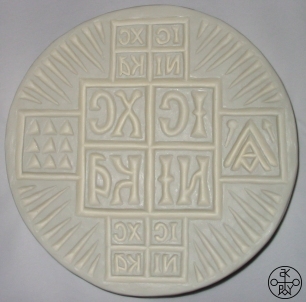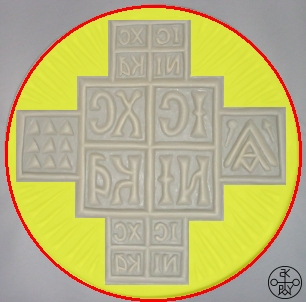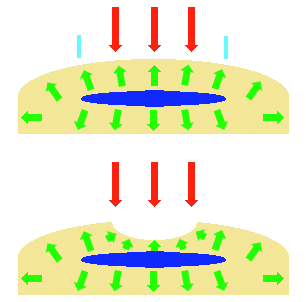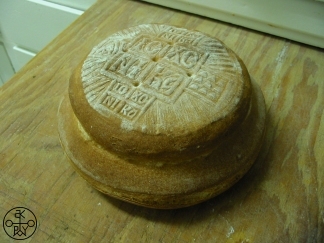|
The colored portions here represent the
particle portions
of the stamp. The whole idea behind a stamp is to draw out
the particles for the priest or bishop to cut. It (almost)
goes without saying that if the stamp produces a weak imprint, then the priest or bishop won't know where to cut.
The five particle portions were once individual stamped
loaves (still the case in the Russian practice), symbolize of the
five loaves from the Gospels (Mt 14:17-21, Mk 6:38-44, Lk 9:13-16 & Jn 6:9-13).
Galavaris documents a stamp with more particle portions, so it goes without saying
that the portions are utilitarian: they are present or absent based
on the liturgical needs of the community. So stamps have only three portions, others have only one (like the Russian stamps).
The green squares comprise the particles which are used for
commemorations
. It must
be noted that the upper or lower portions are sometimes cut for a Presanctified Liturgy lamb, but this is not why they
are there. They are for remembering the living (upper portion) and
the departed (lower portion) of the Church, if you follow the Proskomedia rite.
The Theotokos is represented by the triangle on the right made up
of a stylized 'M
Q' to form the
piece which is extracted (flanked by the spear and the sponge of the
crucifixion). On the left are
the Nine Ranks (the Forerunner, the Prophets, the Apostles, the Hierarchs, the Martyrs,
the Ascetics, the Healers, the saints of the day and the
author of the liturgy. The lower illustration should give some
idea of how the extracted particles are layed out on the Diskos.
The central portion, colored blue in the picture, is the
Amnos or Lamb. This is the
particle which is consecrated during the liturgy and becomes the Body of
Christ. It is the first particle to be extracted, and lays in the
center of the Diskos until the Fracture, when it is broken into four
pieces as traced out by the cross imprint from the stamp.
The Amnos bears an inscription, which is a later
development in eucharistic stamps. Pre-Christian stamps often bore
letters. As you have noticed, the stamp has a backwards set of Greek
letters, but there are plenty of examples of stamps where it was the
imprint on the loaf which ended up backwards. Apparently, the
ancients were a lot more flexible on this than we are now. The
inscription reads: IS CS NIKA, an abbreviation for 'Jesus Christ' in the upper two squares, and the word 'Conquers' divided in the bottom two.
|
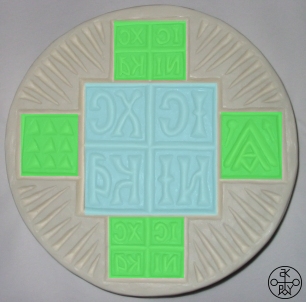
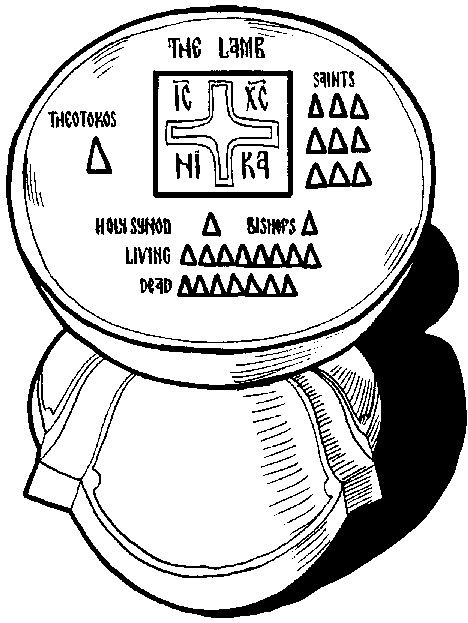
|
